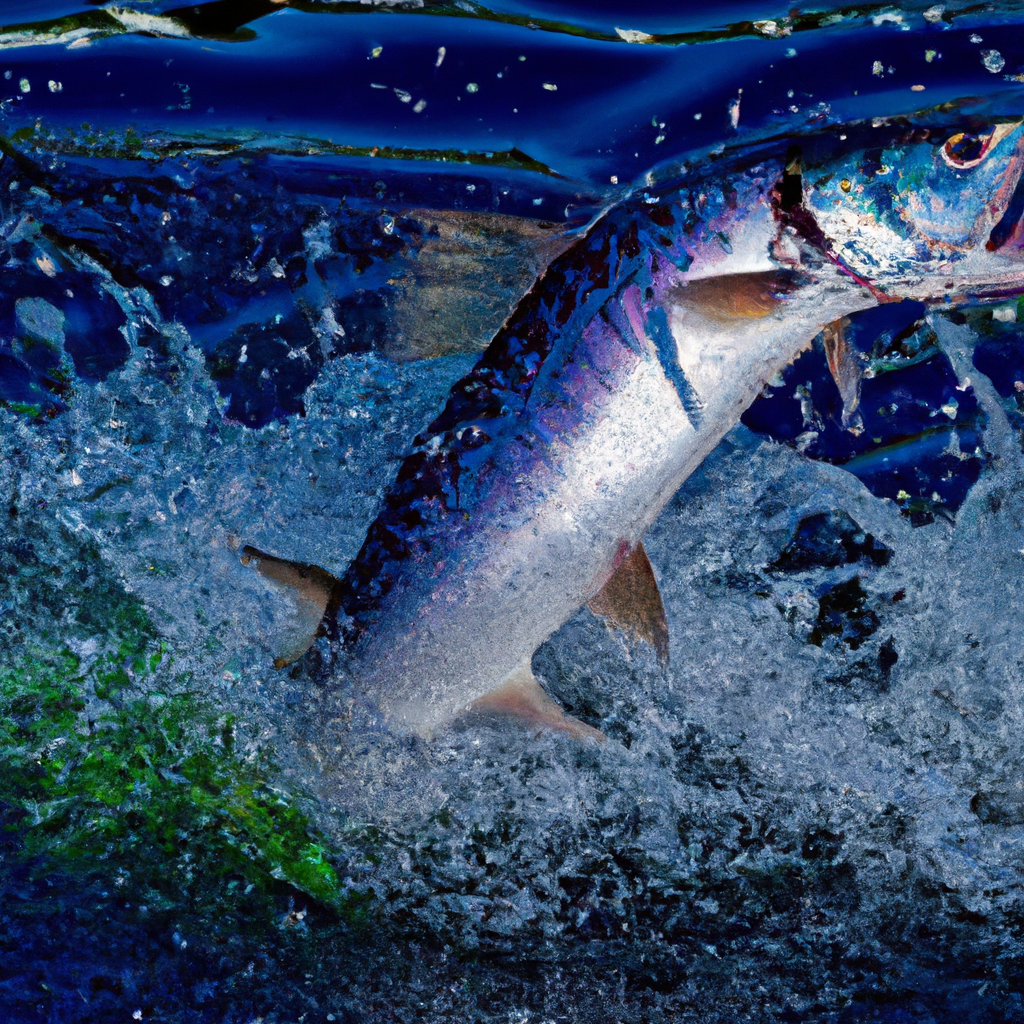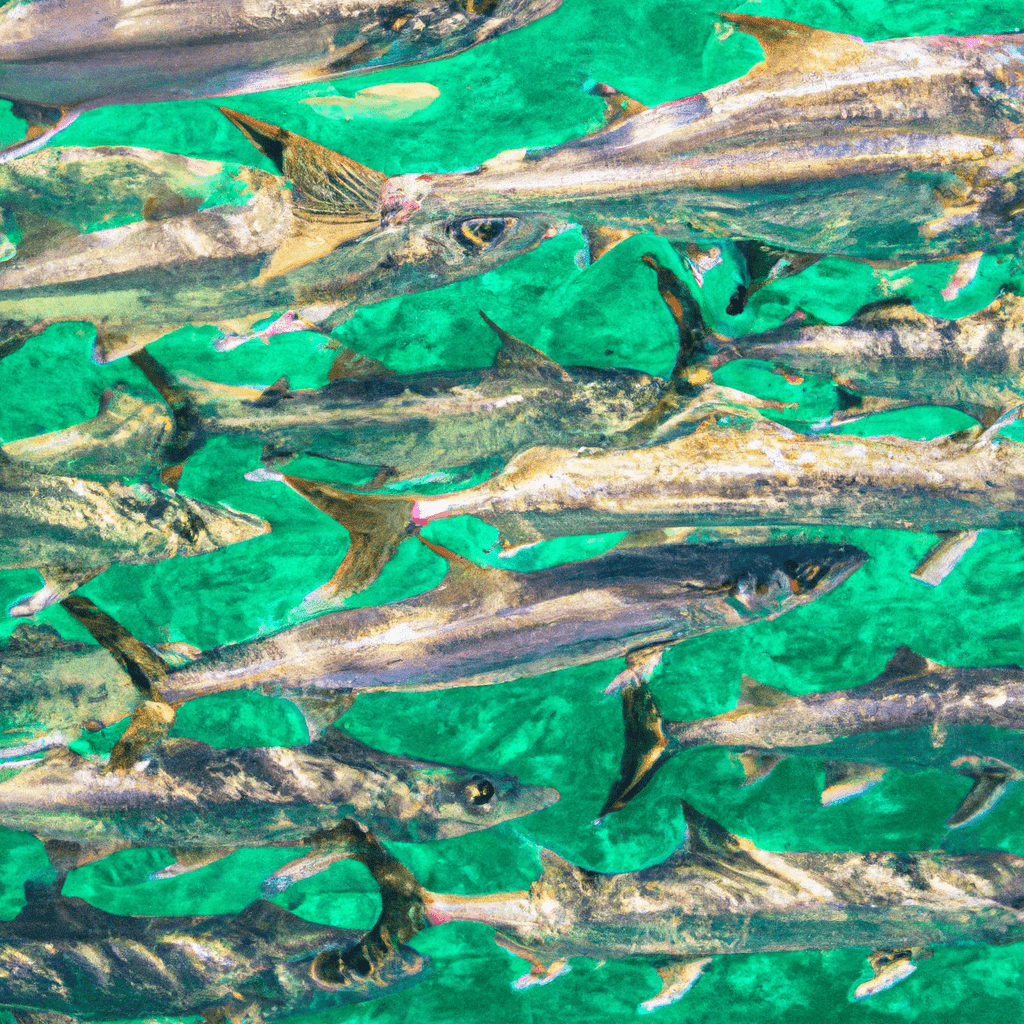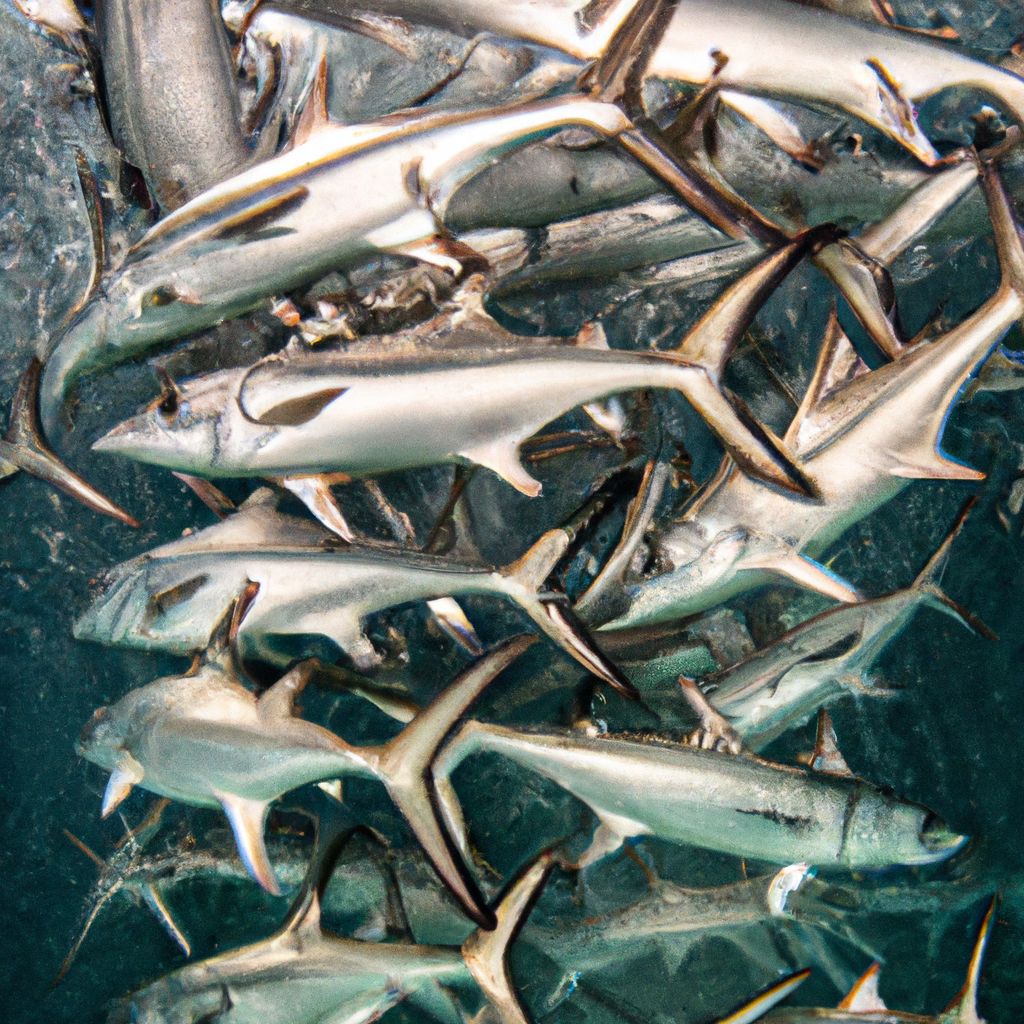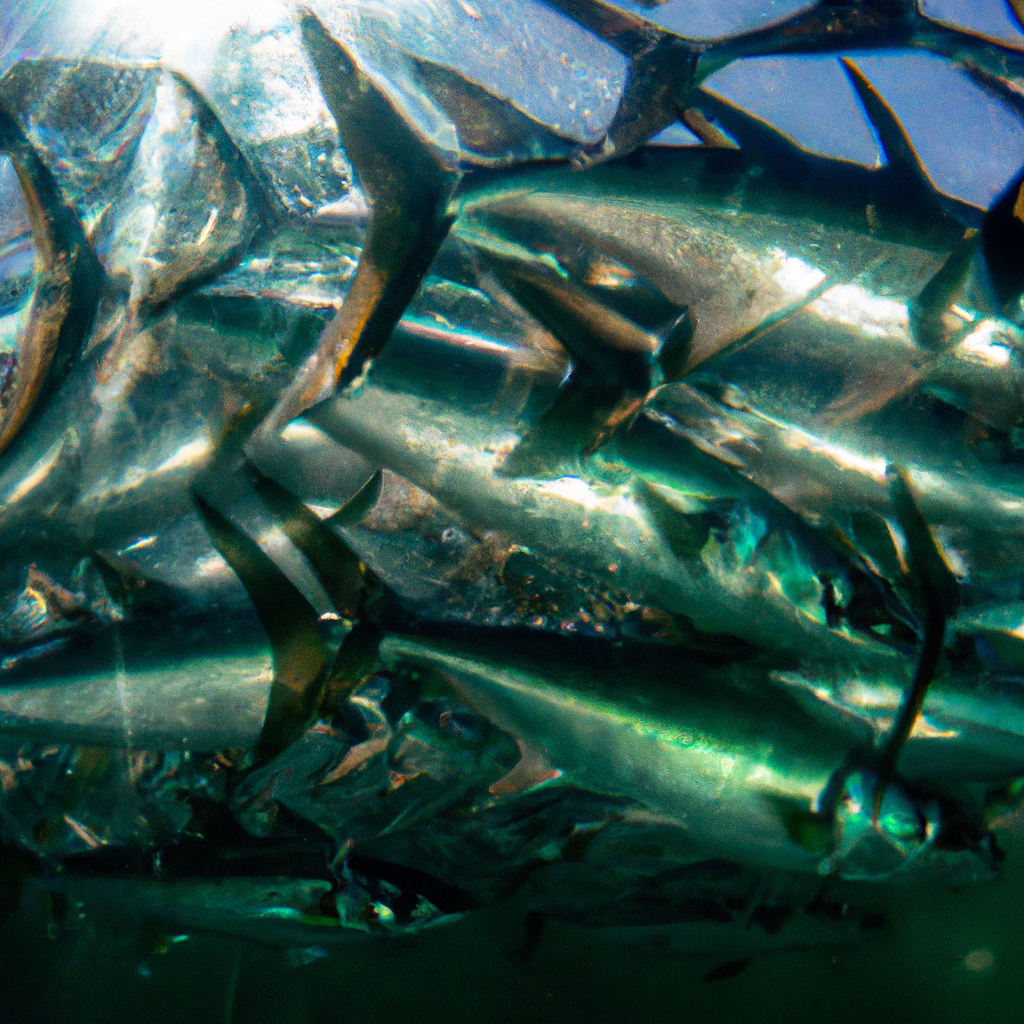Ever wondered why tarpon behave the way they do? Are you curious about the patterns behind their feeding habits, migration, and social dynamics? Look no further, as we delve into the mystery of tarpon behavior.
In this article, we will explore the intricate relationship between tarpon behavior and environmental factors, uncover the role of genetics, and analyze the patterns that govern their movements.
Get ready to unravel the secrets of these fascinating creatures.
The Feeding Habits of Tarpon

You’ll be amazed by the tarpon’s incredible leaping ability during feeding. Tarpon, also known as the ‘silver king,’ exhibit unique feeding patterns and employ various foraging strategies.
Extensive research has shed light on their feeding habits, revealing fascinating insights into their behavior. Tarpon are opportunistic predators and exhibit a diverse range of feeding patterns. They primarily feed on small fish, crustaceans, and even insects.
Their foraging strategies include ambushing prey, actively pursuing them, and even gulping them from the surface. Tarpon are known for their acrobatic leaps out of the water during feeding, which helps them dislodge prey and capture it more effectively.
These feeding behaviors showcase the tarpon’s adaptability and efficiency as hunters, making them a captivating species to study.
Tarpon Migration: Uncovering the Patterns

Uncovering the patterns of tarpon migration can provide valuable insights into their behavior and movement. By studying their migratory patterns, scientists can gain a better understanding of how tarpon navigate vast distances and the factors that influence their movements.
Here are some key findings related to tarpon migration:
- Tarpon breeding grounds: Research has revealed that tarpon migrate to specific areas for breeding purposes. These breeding grounds are often located in warm, shallow waters, such as estuaries and coastal bays.
- Seasonal migrations: Tarpon exhibit seasonal migrations, with the movements influenced by factors such as water temperature, food availability, and reproductive cycles.
- Long-distance journeys: Tarpon are known to undertake long-distance migrations, traveling hundreds of miles to reach their preferred breeding grounds.
- Impact of climate change: Climate change can have a significant impact on tarpon migration. Rising sea temperatures and changes in ocean currents can disrupt their migratory patterns and alter the availability of suitable breeding grounds.
Understanding tarpon migration patterns and the effects of climate change can help inform conservation efforts and ensure the long-term survival of this magnificent species.
Unraveling the Social Dynamics of Tarpon

To understand the social dynamics of tarpon, it’s important to observe their interactions and behaviors within their groups. Tarpon communication plays a crucial role in their social hierarchy, allowing them to establish dominance and maintain order within their schools. Through a variety of visual and tactile signals, tarpon are able to convey information to one another, such as their intentions, social status, and reproductive readiness. Research has shown that larger, more dominant individuals tend to occupy the center of the school, while smaller individuals are often found on the periphery. This social hierarchy helps to minimize conflict and ensure efficient foraging and breeding opportunities for all members of the group. The following table highlights some key behaviors and communicative signals observed in tarpon social dynamics:
| Behavior/Signal | Description | Function |
|---|---|---|
| Tail slapping | Vigorous movement of the tail against the water’s surface | Aggression, warning |
| Jaw gaping | Opening and closing of the mouth | Threat display, territoriality |
| Body rubbing | Physical contact between individuals | Bonding, affiliation |
| Color changes | Change in skin pigmentation | Courtship, reproductive readiness |
Tarpon Behavior and Environmental Factors
Understanding how tarpon respond to environmental factors is crucial in unraveling the mystery of their behavior. Tarpon, as a species, exhibit specific habitat preferences that influence their behavior. These preferences include:
- Estuaries: Tarpon are commonly found in estuarine habitats, where they’ve access to both freshwater and saltwater environments.
- Warm Water: Tarpon prefer warm water temperatures, typically between 72-82 degrees Fahrenheit.
- Vegetation: They seek out areas with abundant vegetation, such as seagrass beds or mangrove forests, which provide them with food and shelter.
- Oxygen Levels: Tarpon require well-oxygenated waters, as they’re highly active fish.
Climate change poses a significant threat to tarpon behavior. Rising water temperatures and altered ocean currents can disrupt their habitat preferences, forcing them to adapt or migrate to more favorable environments. Understanding the impact of climate change on tarpon behavior is crucial for their conservation and management.
The Role of Genetics in Tarpon Behavior

Did you know that genetics plays a crucial role in shaping tarpon behavior?
Genetic variations and inherited traits have a significant impact on how tarpons behave in their natural environment. Research has shown that certain genetic variations can influence their swimming patterns, feeding habits, and even their social behavior.
For example, some tarpons may have inherited traits that make them more aggressive in competition for food or mates, while others may have inherited traits that make them more timid or solitary. These genetic differences can affect how tarpons interact with their environment and other species, ultimately shaping their overall behavior.
Understanding the role of genetics in tarpon behavior is essential for conservation efforts and managing the population effectively. Further research is needed to fully unravel the complex relationship between genetics and tarpon behavior.
Frequently Asked Questions
What Are the Physical Characteristics of Tarpon?
Tarpon’s physical characteristics include a silver-scaled body, elongated dorsal and anal fins, and a large mouth. Their anatomy enables them to swim swiftly and jump out of the water, making them a fascinating subject for studying their behavior.
How Do Tarpon Reproduce and What Is Their Reproductive Cycle?
Tarpon mating habits and spawning behavior are fascinating topics to study. Their reproductive cycle involves specific behaviors and environmental cues. Understanding these intricacies is crucial for unraveling the mystery of tarpon behavior.
Are Tarpon Affected by Climate Change?
As you ponder the impact of climate change on tarpon, consider the rising temperatures and how they may alter their migratory patterns. These changes could have profound consequences for the species.
How Long Do Tarpon Typically Live?
Tarpon, a popular game fish, have a fascinating life span. Research suggests that they can live up to 50 years or more, making them one of the longest-living fish species in the ocean. Their longevity raises intriguing questions about their behavior and adaptations.
What Are the Main Predators of Tarpon in Their Natural Habitat?
The main predators of tarpon in their natural habitat are sharks and dolphins. Predator prey dynamics play a crucial role in the hunting strategies employed by these predators, as they rely on their speed and agility to catch tarpon.

